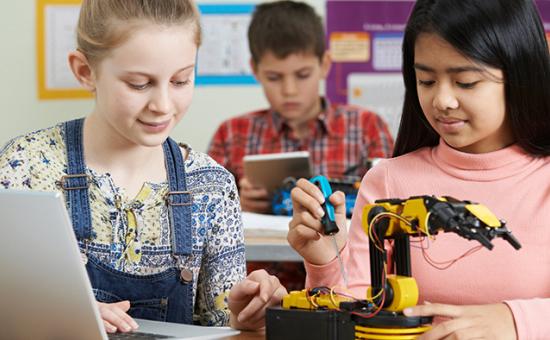Teaching for the future: Computer science
12/07/2021
ISTA member Kerry Sensenbrenner submitted this article for publication in the fall 2021 issue of the Advocate. Sensenbrenner is a science and computer science teacher at Thompkins Middle School at Evansville Vanderburgh School Corporation. She is also an Indiana Department of Education CS Champ, 2020 Governor’s Workforce Cabinet CTE Intern and Indiana Teach Plus Aluma.
I don’t feel that old, but I am older than Google. I didn’t have a cell phone until college. I remember when the iPad was launched. I got my first email address as a freshman.
Though it’s hard to believe, these experiences are entirely foreign to the generations entering our classrooms. Our students will be lifelong consumers of technology. However, we can’t confuse students’ comfort with technology and gadgets as proficiency in computers. Technology will continue to be embedded into every industry, and computer science (CS) will be fundamental to problem-solving and success. Students with computational capacity and technical literacy will create the future instead of just consuming it.
As a science teacher, I started my CS journey at the same time as my students. I do not have a background as a developer or programmer. When code.org first released its CS curriculum, I incorporated plugged and unplugged coding lessons with my students and saw immediate results like increased achievement, engagement and focus.
Walk into my science classroom now, and you will see students build and code a wearable, smart clothing prototype, learn motion graphing via Sphero Robots and code a commercial for interplanetary travel using Scratch. Students continuously combine computational thinking and problem-solving skills with CS and science content knowledge to successfully execute these objectives and standards. Integrating CS into all content areas exposes learners to new and relevant topics that will broaden their experiences and enable schools to create the next generation of technologists. This can extend far beyond science – in an elementary setting, computational thinking lessons could include correlating the structure of paragraph writing as an algorithm, or in social studies, students can create an app to explore the state.
New technologies are always coming! A student entering our schools now could be the first to visit Mars or head up mission control, and we need to prepare them for that honor.
